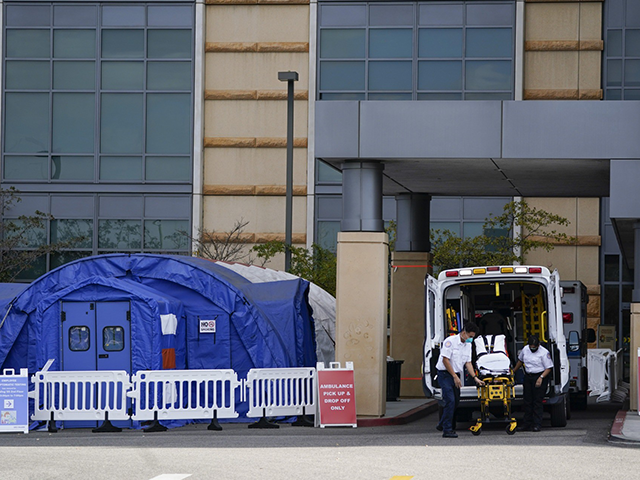Emergency departments in California’s San Diego County are reportedly seeing an overwhelming number of patients as flu season ramps up.
According to an article published in the San Diego Union-Tribune on Friday:
Scripps Memorial Hospital Encinitas, Jacobs Medical Center at UCSD Health in La Jolla and Sharp Grossmont Hospital in La Mesa all reported Friday that they have begun using overflow tents outside their normal emergency department buildings to handle a current increase of respiratory illness.
…
About 9 percent of emergency room patients had flu symptoms last week, up two percentage points from two weeks ago, with COVID-19 symptoms also increasing, though not as quickly, according to the county’s weekly respiratory illness report.
According to Sharp Health, the Sharp Grossmont tent has been in place since the beginning of the coronavirus pandemic and “they are using the tents to test for all respiratory viruses including RSV, influenza and COVID for those patients presenting with flu-like symptoms,” according to NBC San Diego.
Influenza, more commonly known as flu, is caused by a virus which is usually passed along to others when someone infected with the virus sneezes or coughs, per the Johns Hopkins Medicine website.
“Each person may experience symptoms differently. The flu is called a respiratory disease, but it can affect your entire body,” the website said, adding symptoms include cough, exhaustion, fatigue, headache, high fever, runny or stuffy nose, aches, sneezing, possible sore throat, vomiting, and diarrhea.
The Union-Tribune report said emergency rooms are experiencing a lot of traffic, and “Scripps hospitals and doctors offices have recorded 1,695 positive flu tests since Sept. 1 compared to 471 during the same span last year.”
However, staff members have so far been keeping up with the demand for care but that might change if they become infected and must stay at home to recover.
In Los Angeles County, there has reportedly been an uptick in coronavirus and Respiratory syncytial virus (RSV) cases among children, KTLA reported Saturday:
Dr. Kimberly Shriner, an infectious disease specialist with Huntington Health Hospital, told the outlet, “There’s this gap in immunity that happened when everybody was masked up and socially isolated.”
“And so normal viruses that occurred during normal winters and so forth in the community were not circulating. So, they didn’t have an opportunity to experience some of these viruses and so they don’t have any immunity to it,” she concluded.
Even though flu viruses are detected all year round across the nation, they usually circulate during the fall and winter months with a surge happening in October, according to the Centers for Disease Control and Prevention (CDC).
